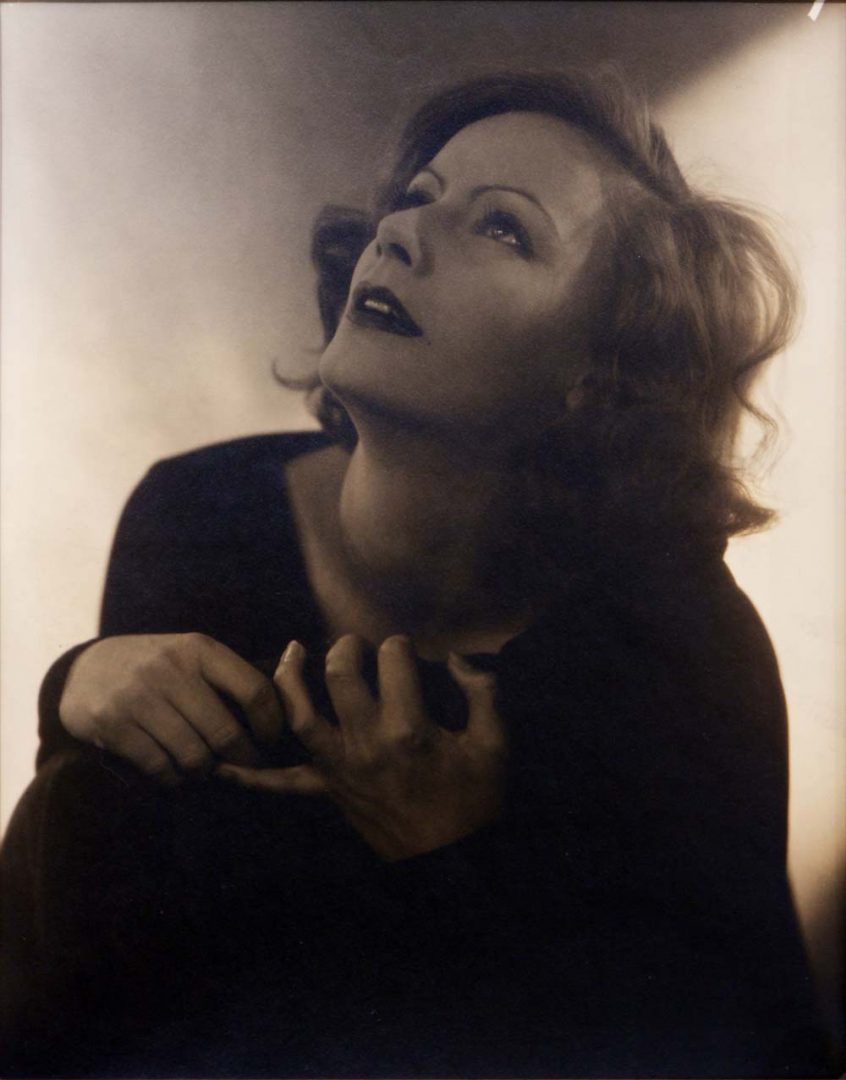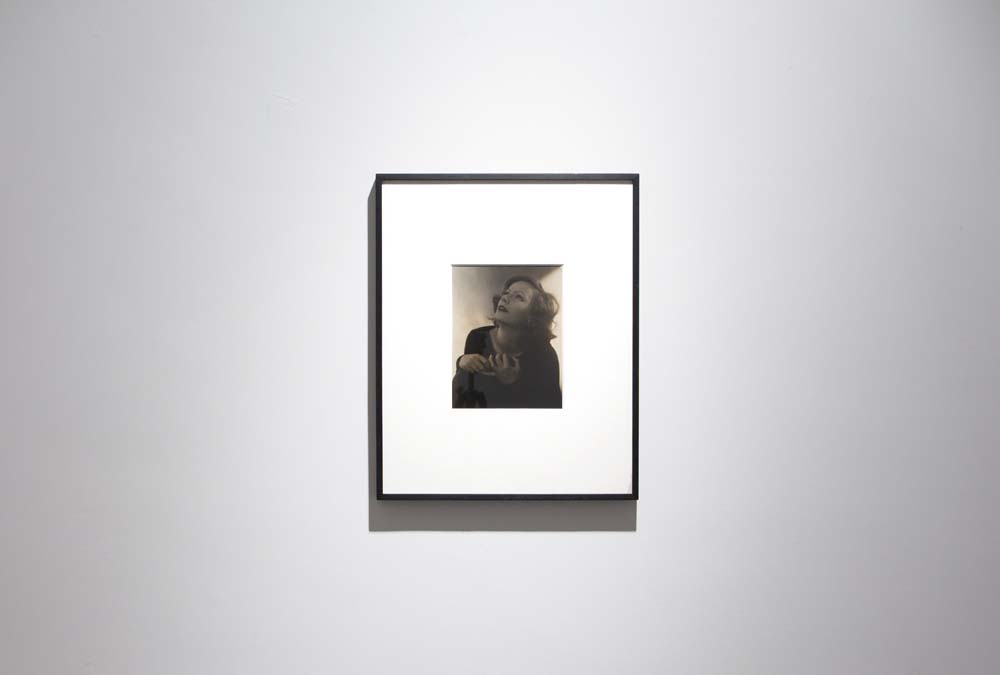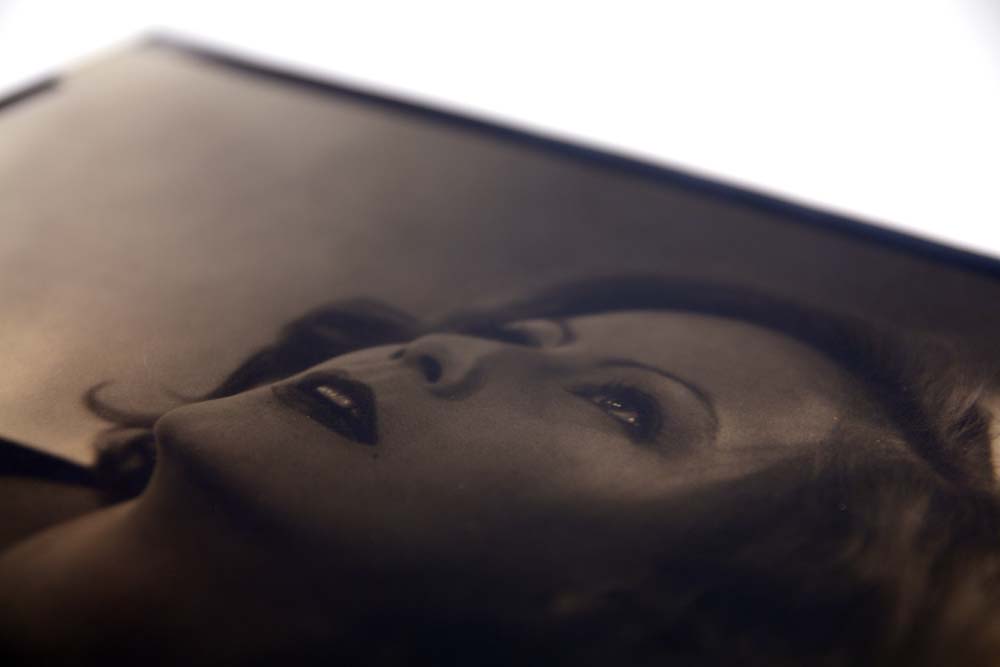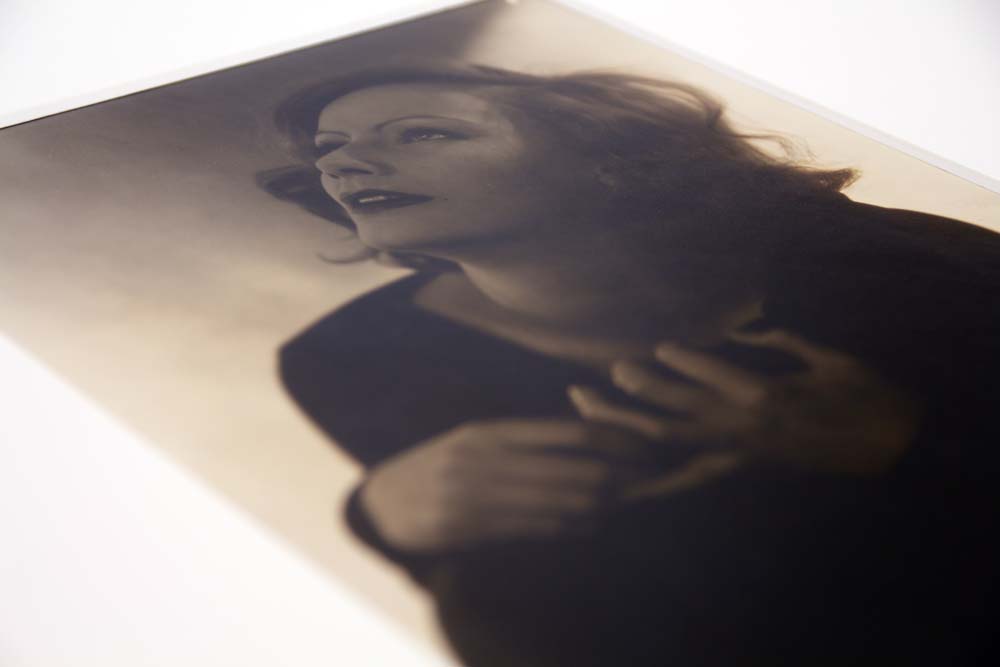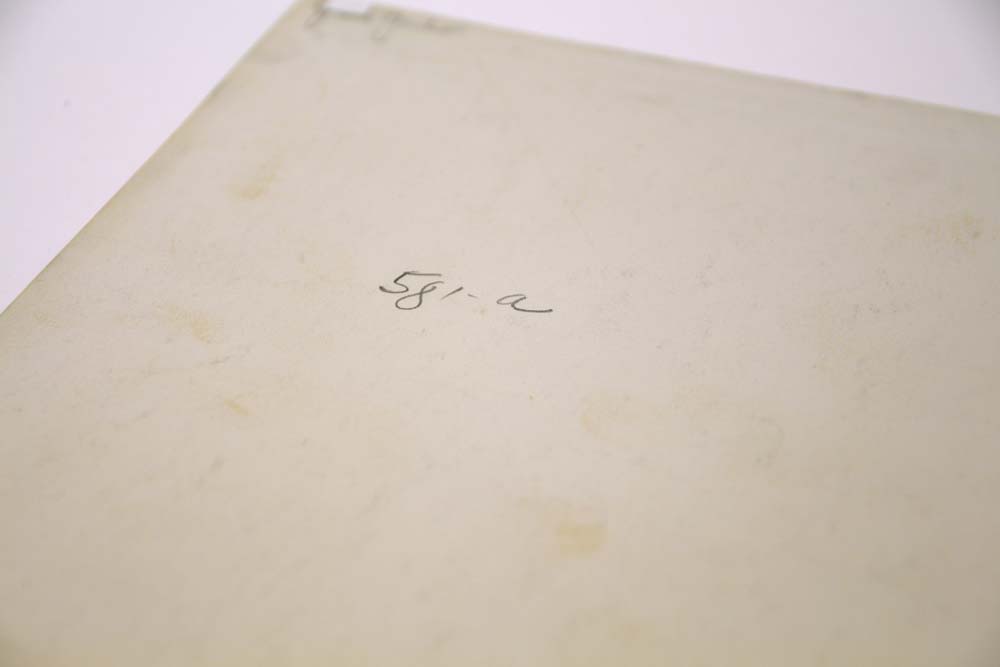Greta Garbo, 1928
EDWARD STEICHEN
Inscribed with title on reverse
Silver gelatin print, printed c. 1928
10 x 8 inches

Edward Steichen has had one of the most varied careers of any photographer, beginning as a key member of the Pictorialist movement and the Photo-Secession in the early 1900s, to a successful fashion photographer, a Captain of a Naval aerial photography division through to the directorship of the department of photography at the Museum of Modern Art, New York from 1947-1961.
In 1923, Steichen became the chief photographer at Condé Nast Publications. For the subsequent 15 years, Steichen produced numerous fashion and celebrity portraits for both Vogue and Vanity Fair. Frank Crowninshield, then editor of Vanity Fair, dubbed Steichen the ‘greatest of living portrait photographers’ and he was given a significant salary for his position, becoming by the far the highest paid photographer of the time.
Moving away from the Pictorialist style which he had embraced at the beginning of the century, from the 1920s onwards Steichen championed straight photography. His portraits from this period are characterised by their sharpened focus, dramatic lighting and bold composition.
From the 1920s onwards Steichen championed straight photography. His portraits from this period are characterised by their sharpened focus, dramatic lighting and bold composition.
Steichen photographed actress Greta Garbo in 1928 for Vanity Fair while the actress was on the set of her film A Woman of Affairs. The silent film was one of the most successful films of the year for its studio, MGM, and was released as Garbo emerged as the studio’s biggest star. Steichen had just five minutes to photograph her, producing several portraits, which have become some of the most recognisable and enduring images of the actress. Garbo was celebrated for the naturalistic style of her acting and her ability to express emotions with the subtlest of gestures. Steichen, similarly, aimed to express not simply a likeness of his sitters but to evoke something of their character. This portrait, which is lit by two spotlights shining in the background, depicts Garbo almost in silhouette. As she tilts her head wistfully upwards, marred in shadow, Steichen evokes the introversion and hint of mystery with which Garbo was frequently mythologised.
This print is a rare vintage print, made soon after the picture was taken. It is in exceptional condition.
